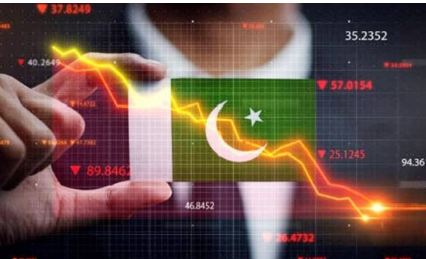Pakistan’s economic woes continue to deepen, with one of the most pressing challenges being the widening disparity between the US dollar and the Pakistani rupee. As of recent reports, the dollar is fast approaching an alarming rate of Rs. 350, threatening further economic instability and severely impacting sectors reliant on imported goods. This exchange rate crisis has not only hit the business community hard but has also fueled inflation, making life increasingly difficult for the common man.
At the heart of this crisis lies Pakistan’s chronically low export base. Despite having a sizable population, abundant natural resources, and strategic geographic location, Pakistan’s export performance remains dismal. For a country of over 240 million people, a consistent annual export volume hovering around $30 billion is far from adequate. This limited inflow of foreign exchange, combined with large import bills, continues to exert pressure on the rupee.
The depreciation of the rupee has a cascading effect. Businesses that rely on imported raw materials are now being forced to increase prices or shut down operations altogether. Essential goods, including pharmaceuticals, machinery, and fuel, become costlier, thus feeding into the inflation cycle. The burden eventually falls on the end consumer, who is already grappling with high food prices, unemployment, and low purchasing power.
Perhaps most concerning is the government’s seeming helplessness in managing the rupee’s slide. Despite the tall claims of economic revival, ground realities suggest otherwise. Structural issues remain unresolved: energy shortages, political instability, inconsistent policies, and bureaucratic hurdles continue to scare away investors and stifle industrial growth.
A glaring contrast can be seen in the performance of the Afghan currency. Despite Afghanistan having virtually no formal export economy and being politically isolated, its currency has performed more steadily than Pakistan’s. This is largely due to strict currency controls and tight government regulation—something Pakistan has failed to enforce effectively. The comparison is a national embarrassment and should act as a wake-up call for policymakers.
What Pakistan needs is an aggressive and coherent export policy. The government must move beyond short-term fixes and adopt structural reforms to boost export industries such as textiles, agriculture, IT, and pharmaceuticals. There must be focused incentives for exporters, reduced bureaucratic red tape, and guaranteed energy supply at competitive rates. Diversifying export markets and promoting value-added goods rather than raw materials is essential for long-term sustainability.
Moreover, encouraging local manufacturing and import substitution can help reduce dependency on foreign goods. Effective monetary and fiscal policies, coupled with stability and investor confidence, are the only ways forward.
The rupee-dollar disparity is more than just an economic figure—it is a symbol of national performance. If not addressed urgently, it threatens to unravel the economic fabric of the country. Pakistan must act now to break this cycle and chart a path toward financial sovereignty. The time to boost exports is not tomorrow—it is today.

















